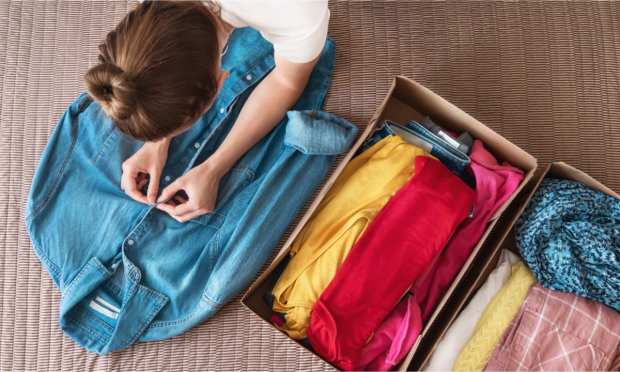Secondhand Apparel Market Surges as Consumers Seek Value

The global secondhand apparel market is expected to nearly double by 2027.
The market will leap from $177 billion in 2022 to $351 billion in 2027, driven primarily by consumers seeking value, ThredUp, an online consignment and thrift store, said in a Wednesday (April 5) report.
In the United States, the secondhand apparel market will grow from $39 billion in 2022 to $70 billion in 2027, according to the report.
These totals include both resale and traditional thrift and donation. Resale is expected to account for a growing share of the total secondhand apparel market in the U.S. as it increases from $17 billion in 2022 to $42 billion in 2027, the report said.
“Resale is starting to blossom globally, with many of the largest retailers in the world adopting more circular business models,” ThredUp CEO James Reinhart said in the report. “While value continues to be a key driver that motivates consumers to think secondhand first, global climate issues have increased awareness of resale’s potential to reduce fashion’s impact on the environment.”
As PYMNTS reported Sunday (April 2), the resale market has experienced significant growth, with third-party platforms such as ThredUp, Vestiaire Collective and Poshmark — as well as brands themselves — launching their own resale marketplaces amid growing consumer interest in eco-friendly and cost-effective ways to enjoy new styles.
While value is consumers’ No. 1 motivation for buying secondhand apparel, quality, selection, convenience and transparency are other contributing factors, according to the ThredUp report.
Brands and retailers are responding to this demand, with 88 brands launching dedicated resale programs in 2022 and 58% of retail executives saying resale options are becoming table stakes, according to a Wednesday press release.
“Traditional retailers are responding to this demand by entering resale and are really the ones driving the market forward, and we expect increased adoption in retail as secondhand becomes more of a lifestyle for consumers,” Neil Saunders, managing director at GlobalData, which conducted the study for ThredUp, said in the release.
PYMNTS research has found that reselling clothes, accessories and other items has also become a popular way for consumers to both clean out their closets and make some extra side money.
This has become the top source of non-job supplemental income received by consumers living paycheck to paycheck without issues paying bills, according to “The New Reality Check: The Paycheck-to-Paycheck Report: The Supplemental Income Edition,” a PYMNTS and LendingClub collaboration.
For all PYMNTS retail coverage, subscribe to the daily Retail Newsletter.

